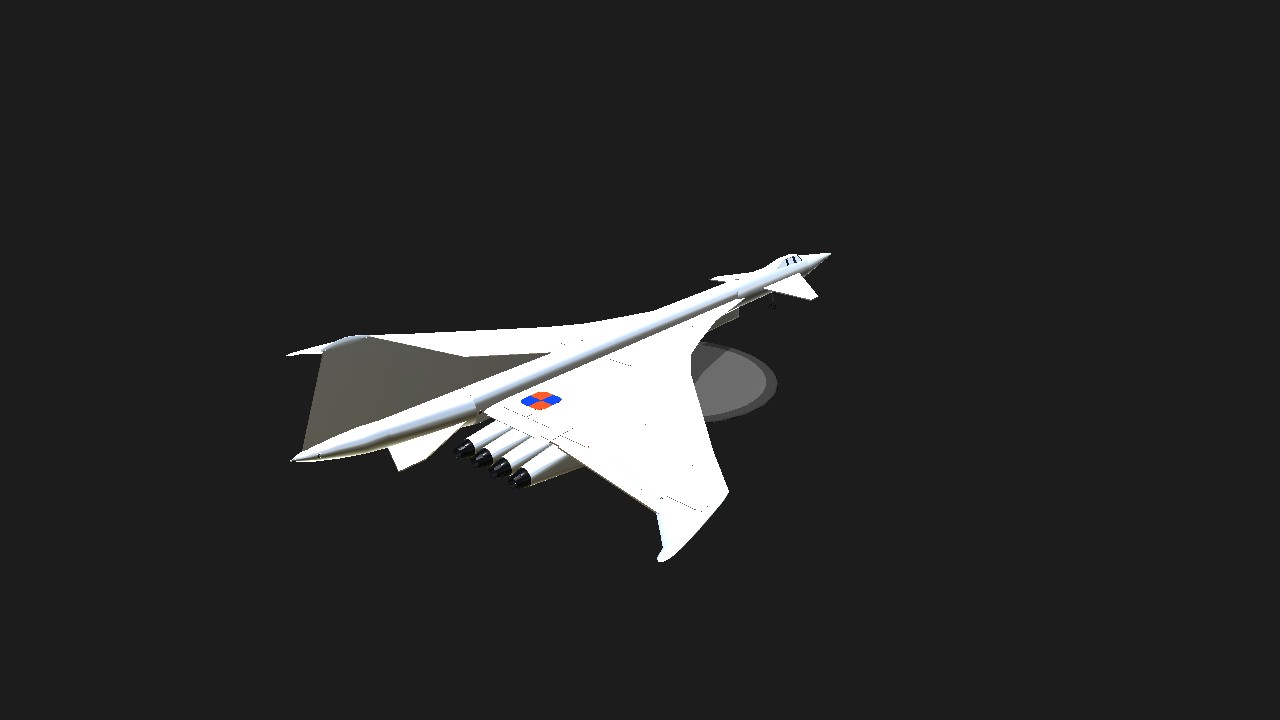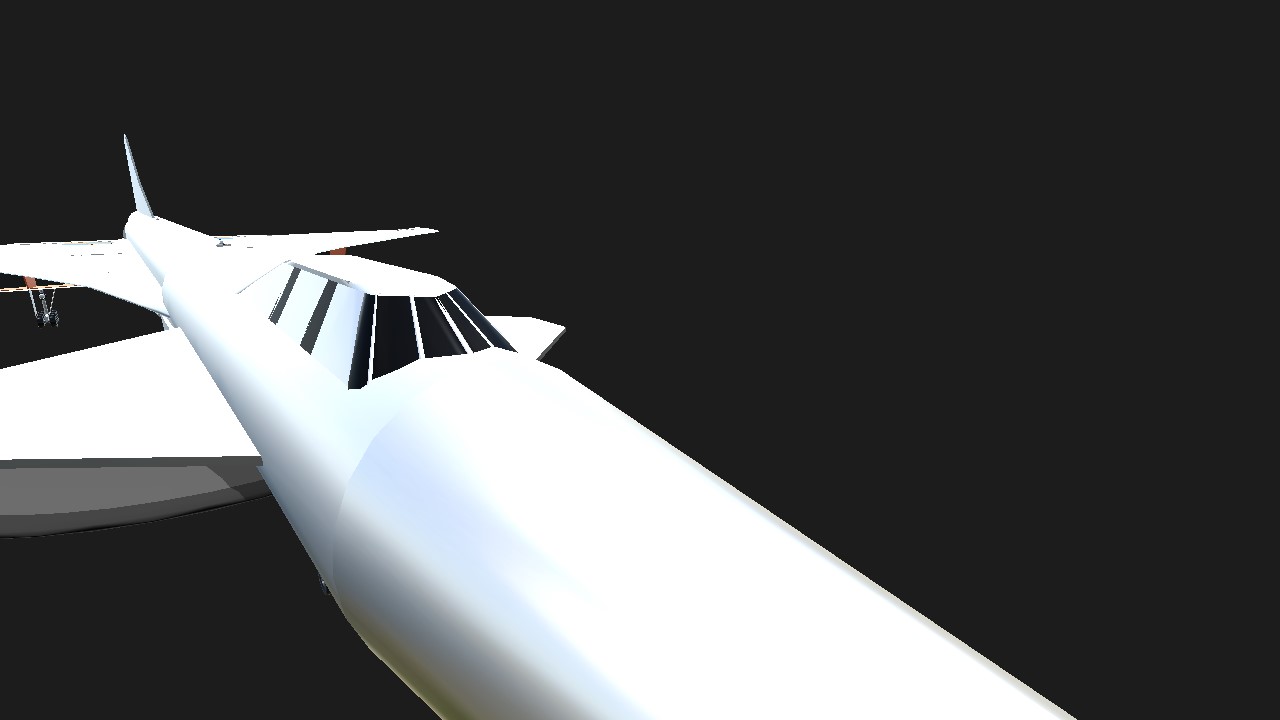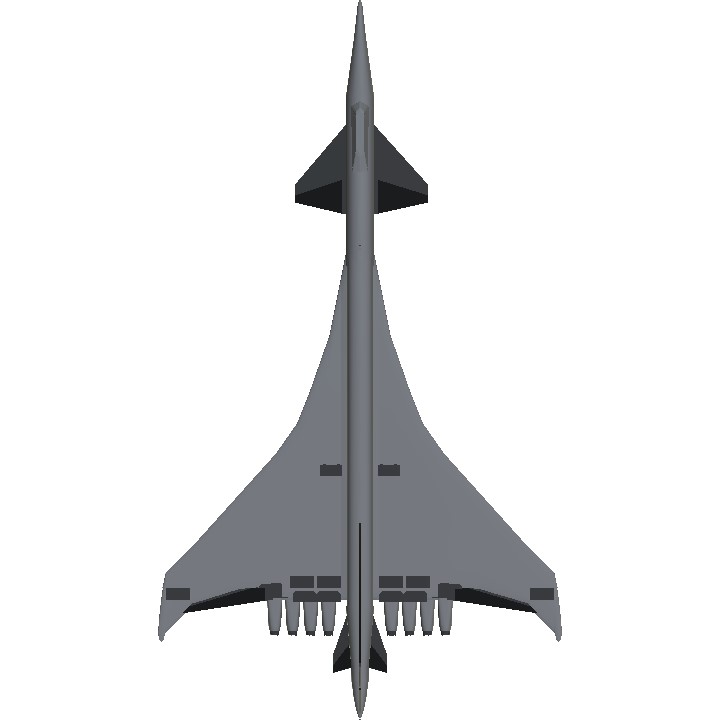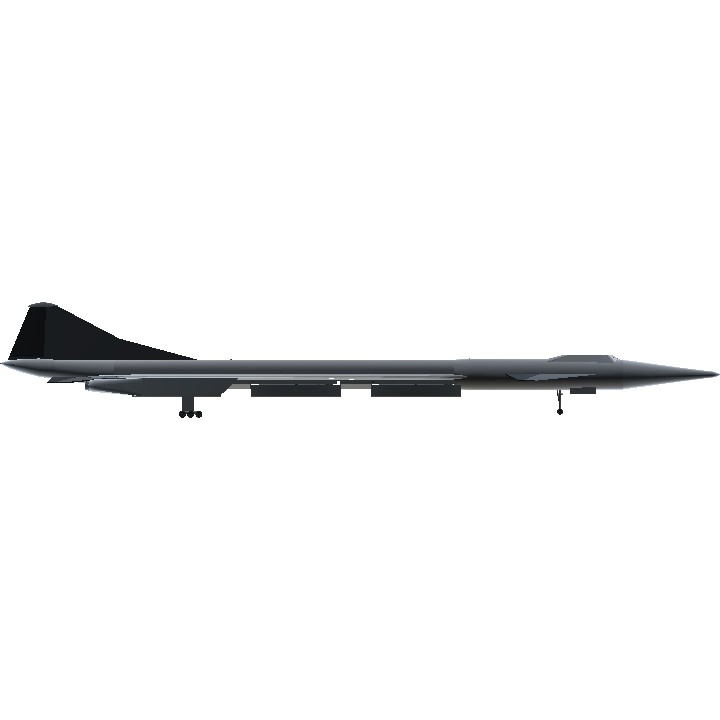New version with updated, more realistic cockpit! Find earlier version here with fictional history displayed:
https://www.simpleplanes.com/a/2me025/Marshall-Lewis-B-95-Phoenix-MK2
Flight controls have been slightly updated from the previous version and are as follows.
*AG2 engages afterburner. Note: Only use this above 15,000 feet. The canard based layout is somewhat unstable on this aircraft, and can cause a loss of control if under afterburner at low altitudes.
*AG3 releases the ordnance. Note: Despite being larger cruise missiles, these must be used as gravity bombs, firing them conventionally will destroy the aircraft.
*AG4 activates running lights.
*AG5 activates a second magazine of countermeasures.
*AG6 activates landing gear lights.
VTOL controls operate the bomb bay doors.
Camera 4 is an approximate angle for a bomb sight. Not terribly great however.
Cockpit view is now placed to give a roughly pilots' eye view from the aircraft! No instrumentation yet, but it's the closest I've gotten yet to a genuine in-aircraft perspective.
Flying characteristics:
The Phoenix is a fast, sensitive aircraft. There is a lot of power, and the aerodynamics aren't exactly the most stable. Keep a close eye on pitch trim, you'll need to adjust it as you change speed and altitude. Sudden pitch movements can cause a loss of control and make the aircraft tumble. If that happens, cut power, extend air brakes, and try to nose down. Once you've gotten some control back, pull up gently and apply non afterburner power.
The canards can be a bit tricky, particularly at low speed. Be careful for a sudden dropping of the nose at low speed, if this happens use full nose up trim, but don't pull up on your pitch controls or the canards stall out for some reason. Landing approach speed should be about 280 to 300 mph, and try to keep the nose high at all times.
I strongly discourage trying to maneuver on full afterburners below 25,000ft when carrying bombs, they tend to explode when making abrupt maneuvers. In addition, she tends to roll over at speed when pitching up or down, and might tumble at times. If you tumble, deploy air brakes, get the nose down, and pull up under normal (not afterburner) power.
Hope you enjoy flying the updated Phoenix!
-Kevin
Specifications
General Characteristics
- Created On Mac
- Wingspan 110.7ft (33.8m)
- Length 197.5ft (60.2m)
- Height 31.7ft (9.7m)
- Empty Weight 226,592lbs (102,780kg)
- Loaded Weight 427,671lbs (193,988kg)
Performance
- Power/Weight Ratio 4.256
- Wing Loading 120.7lbs/ft2 (589.4kg/m2)
- Wing Area 3,543.0ft2 (329.2m2)
- Drag Points 45520
Parts
- Number of Parts 319
- Control Surfaces 9
- Performance Cost 2,455






